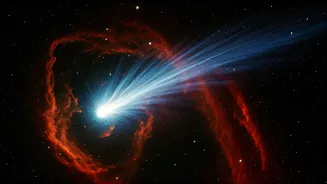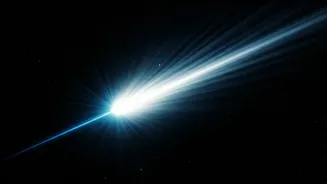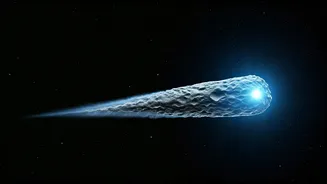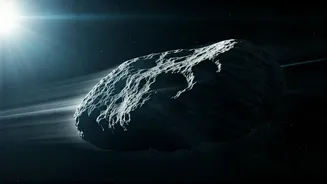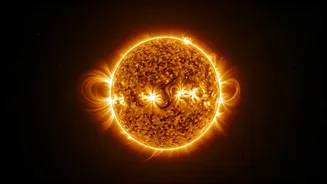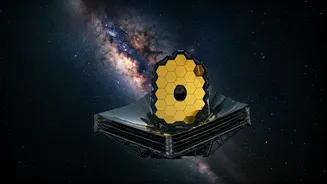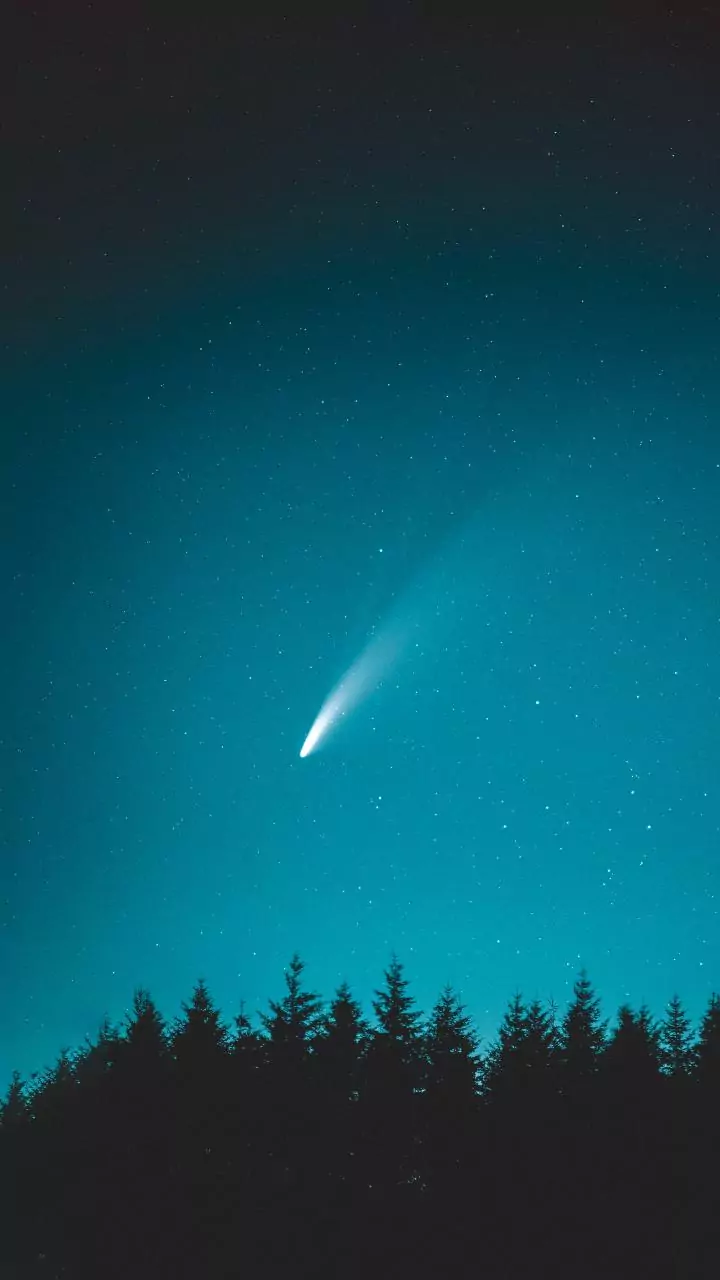Unveiling the Intruder
The discovery of interstellar objects, such as Comet 3I/Borisov, has completely reshaped our comprehension of the cosmos. Unlike comets and asteroids that
originate within our solar system, these intriguing wanderers originate from outside, providing a rare opportunity to examine materials that predate our Sun. The question of their composition, age, and overall structure becomes paramount. Observing these cosmic visitors when they approach our vicinity is an extraordinary opportunity for scientists to collect data and extract invaluable information. These observations provide crucial data about the universe's formation, composition, and evolution. Further study of their trajectory and speed offers vital clues regarding their origins and the conditions they have faced throughout their interstellar journey.
Size, Age & Makeup
Determining the specifics of an interstellar object presents a significant challenge for scientists. The characteristics of the object must be ascertained in a limited time as it traverses through our solar system. The size, for example, is usually estimated based on the amount of sunlight that is reflected. The age of such objects is estimated using information based on the composition of the material. The presence of water, as revealed by analysis, is another critical characteristic that is examined. The presence of these components offers vital data regarding the environment from which the interstellar object originated. By studying the composition of an object, scientists gain valuable information regarding its formation and the environments it encountered on its journey. All collected data assists in forming a comprehensive understanding of these cosmic travelers and the history of the universe.
Seeing the Visitor
The brief encounter of these interstellar objects with our solar system presents a fleeting opportunity for observation. The timing of their arrival and the manner in which they can be observed are critical to studying them. When such a traveler becomes visible depends on its trajectory and speed. Telescopes, both ground-based and space-based, play a crucial role in observing the visitor. These devices provide scientists with the necessary tools to study the object's physical characteristics, track its path, and record its interactions with the solar system. The data gathered during this period is essential to understand the object. The observations can also reveal details of the interaction between the visitor and the sun, with the presence of jets and tails highlighting the effects of solar radiation and the object's response.
Journey Through Space
Understanding the path and speed of interstellar objects is critical to determine their cosmic origin. These objects travel at high speeds, indicating their origins beyond our solar system, which sets them apart from the usual comets and asteroids. By tracing the course of the object, scientists can pinpoint its likely origin point within the Milky Way or beyond. The trajectory of a cosmic traveler is affected by gravity and the effects of stellar winds, so the analysis of these forces aids in mapping the interstellar journey it has undertaken. The information gleaned provides insight into the environments the object traversed and reveals the conditions that shaped its composition and structure. Each object offers a snapshot of interstellar conditions, giving us valuable insight into what lies outside our solar system.
Why Study Matters
Interstellar objects are like cosmic time capsules, holding information regarding the formation and evolution of other planetary systems. They provide a unique perspective on the composition and conditions within those regions. Studying them gives scientists a chance to analyze materials not usually accessible within our solar system. The presence of water ice, organic compounds, and other elements may reveal insights into the habitability of other star systems. Research can offer vital information about the early stages of our solar system, as these objects may contain components from the same original molecular cloud. In essence, these objects serve as treasures from beyond, expanding our understanding of the universe and its diverse nature.
The Next Discoveries
The ongoing study of interstellar objects continues to be an exciting area of exploration. Scientists are constantly seeking to learn more about the composition of these objects to compare them with comets and asteroids from our solar system. The analysis of these visitors will shed light on the processes shaping planetary systems throughout the galaxy. The development of advanced telescopes and observation methods will further enhance our ability to discover and study these rare visitors. Understanding their nature is a continuous process. Interstellar objects allow researchers to refine existing theories and formulate new hypotheses about the cosmos. As research progresses, we can expect to reveal even more about these visitors from beyond.
Unusual Actions Spotted
Observations of interstellar objects, like Comet 3I/Borisov, have revealed unusual activities, such as the formation of jets and tails as they approach the sun. These jets are streams of gas and dust ejected from the comet's surface, driven by the intense heat from the sun. The tail, caused by the solar wind pushing on the particles, gives an idea of the object's activity. The presence of water leakage from the comet also offers insight into the presence of volatiles within its composition. Observing these actions not only helps astronomers understand the object's surface but also provides clues about its origin and evolution. These processes offer vital data to understand the interactions between interstellar objects and the environment of our solar system.
Comet or Something Else?
Identifying the nature of an interstellar object is a complex task. Scientists carefully study its orbit, composition, and behavior to distinguish between a comet, an asteroid, or something more exotic. The object's path through the solar system, its speed, and its origin all provide critical clues. Composition analysis provides information on what the object is made of. The presence of certain compounds, such as water ice or organic molecules, supports its classification. The activity, like the development of jets and tails, adds another clue. By combining all of these observations, scientists can classify an object and understand its place within the cosmos. Each discovery contributes to a more in-depth comprehension of interstellar objects and their significance.
Cosmic Origin Story
Interstellar Comet 3I/Borisov's journey provides an incredible look into the journey of these objects. Its interstellar travel provides information about the conditions it encountered and the influences that shaped its makeup. The distance it traveled, combined with its high velocity, points to its origins from outside our solar system. It is also fascinating to study how these objects manage their journey through space, with gravitational interactions and stellar winds influencing their path. The study of Comet 3I/Borisov gives insight into the origin of its host star system and provides a glimpse into the diverse environments present in the Milky Way galaxy. The data can refine our understanding of the interstellar medium and the formation of celestial objects.
Controversy & Speculation
While the existence of interstellar objects is well-documented, the subject surrounding these celestial bodies can still generate speculation. There are occasional discussions concerning the nature of these objects and their origin, and whether they are natural or if they might have a different nature. Some sources suggest extraordinary phenomena. Such theories need confirmation by scientific observation. A critical view is vital in scientific research, and scientists must depend on factual evidence. The scientific process promotes in-depth study, validation, and collaboration. Through a blend of speculation and exploration, scientists continue to unravel the secrets of the interstellar objects.
